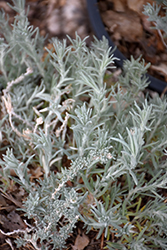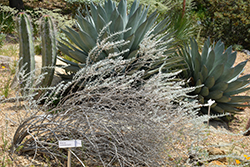It's all about ...
plants

Height: 3 feet
Spacing: 30 inches
Sunlight:
![]()
Hardiness Zone: 3a
Other Names: White Sage, Winter Sage, Ceratoides lanata
Description:
A low, spreading shrub with many slender, upright branches, and fuzzy, pale blue foliage that may persist through winter; brilliant, silvery white plumes in early summer, on female plants only; drought tolerant, and great cover for alkaline soil areas
Ornamental Features
Winterfat is primarily grown for its highly ornamental fruit. The white fruits are carried on showy plumes displayed in abundance from late spring to early summer. It has attractive silvery blue deciduous foliage. The small fuzzy narrow leaves are highly ornamental but do not develop any appreciable fall colour. It features subtle spikes of silver flowers at the ends of the branches from early to mid spring.
Landscape Attributes
Winterfat is a multi-stemmed deciduous shrub with an upright spreading habit of growth. It lends an extremely fine and delicate texture to the landscape composition which should be used to full effect.
This shrub will require occasional maintenance and upkeep, and is best pruned in late winter once the threat of extreme cold has passed. Gardeners should be aware of the following characteristic(s) that may warrant special consideration;
- Self-Seeding
Winterfat is recommended for the following landscape applications;
- Mass Planting
- Rock/Alpine Gardens
- General Garden Use
- Groundcover
Planting & Growing
Winterfat will grow to be about 30 inches tall at maturity, with a spread of 3 feet. When grown in masses or used as a bedding plant, individual plants should be spaced approximately 30 inches apart. It has a low canopy. It grows at a slow rate, and under ideal conditions can be expected to live for approximately 20 years. This is a dioecious species, meaning that individual plants are either male or female. Only the females will produce fruit, and a male variety of the same species is required nearby as a pollinator.
This shrub should only be grown in full sunlight. It prefers dry to average moisture levels with very well-drained soil, and will often die in standing water. It is considered to be drought-tolerant, and thus makes an ideal choice for a low-water garden or xeriscape application. This plant does not require much in the way of fertilizing once established. It is not particular as to soil type, but has a definite preference for alkaline soils, and is able to handle environmental salt. It is somewhat tolerant of urban pollution. This species is native to parts of North America..

